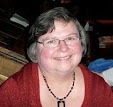Three fold in its themes, Transcendent Kingdom is told by a young woman, Gifty, narrator who is pursuing a PhD in neuroscience at Stanford University. Gifty was born in Alabama to Ghanaian parents who moved to the United States shortly after her older brother, Nana was born. The novel is told in chapters that move back and forth from her youth to her life as a scientist and are multi-leveled as she struggles to put together a coherent look at her life and family.
As she attempts to complete the PhD and work with the mice whom she is studying with regard to the neural circuits of reward seeking behaviors and who are being shocked or given an energy drink to see which respond to not pushing a lever, her mother arrives in town. In the throes of depression she moves in with Gifty and becomes a recluse in her bedroom. Gifty remembers this same behavior occurred after the death of Nana from an overdose. So intertwined are these reminiscences with the struggles of her life, including her religious upbringing and the racial slurs that she and her family endured. The abandonment by her father, "The Chin Chin Man" has also contributed to those painful memories.
Throughout the novel Gifty attempts to work through all the conflicts she feels and is able to accept that just because she is a scientist, she need not give up her religion. She becomes open to friendships and even a romantic relationship with Han, her colleague at Stanford. The depiction of the addiction of Nana is both realistic and also forgiving. and enlightening. It is a condition that should not be viewed as a source of shame or criminalized. Through Gifty, Gyasi reminds us of the anguish that the addicted and his or her family suffer. It is heart-wrenching.
The Transcendent Kingdom was one of the deepest books for its multi-themed approach that I have read recently. To hear Gyasi's lecture added to the complexity of the topics and themes. I have put Homegoing on my "to read list" for sometime in the future.






















